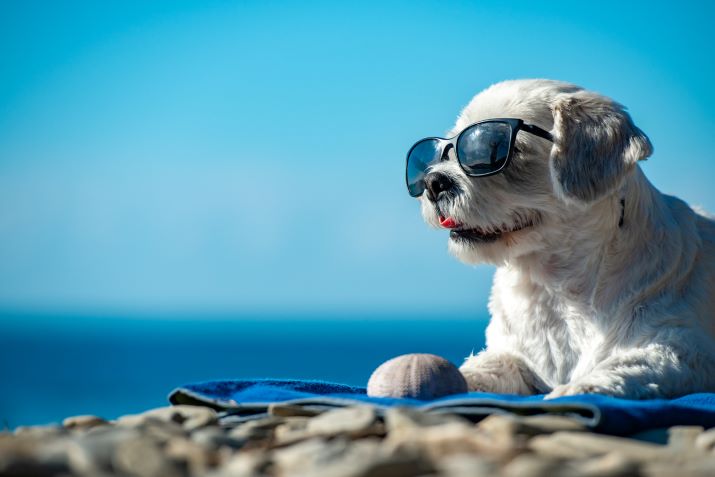
It’s doggone hot!
On this side of the hemisphere, we are beginning to feel the impact of another summer. Temperatures are exceeding 30 degrees celsius and our four-legged friends are starting to feel it! Although over summer, we like to spend more time active and outdoors, it doesn’t mean that we should be exposing our pets to long hot days outside too.
Humans have better adaptations to expel heat, most obviously the fact that we are not completely covered in dense fur, and that we have the ability to sweat. Dogs and cats for that matter cannot really sweat. They can lose some moisture through their paws and mouth, but that is about it. So, when it comes to keeping your pet cool and indeed healthy, there are many simple things to consider and act upon.
- Don’t exercise your dog in the middle of the day. Wait until dusk, or even better; dawn, when the sun has not yet been able to make its full impact
- Touch the bitumen with your hands, before allowing your dog to walk on it. If you cannot keep your hand steadily on the ground for more than 3 or 4 seconds, your dog should not be stepping on it. Dogs can suffer serious burns on their feet and can absorb heat through their paws, leading to hyperthermia (over heating)
- Make sure your dog has access to plenty of water. This means there should be at least three bowls of water in the shade and inside your house. If one tips over, then they still have more water available. Water gets hot very quickly in summer, so never leave it in the sun, or where the sun will be able to cover it across the day.
- Bring your pet indoors where there is air conditioning. If you cannot be home during the day, see if your dog can visit a day care centre, or a friend who can supervise them indoors. Although it is good to have shaded areas in the backyard, older dogs and puppies can suffer from heat stroke even if they have access to shade outside.
- Create opportunities for your pet to play to get cool. Frozen ice-cream containers filled with treats can be a great way to cool down and have fun at the same time. Shallow pools filled with water are also a great opportunity for your dog to cool down, whilst still getting active. Get creative with water and frozen treats, to keep your dog busy during the warmer days at home.
- Take your dog to the beach. There are many places where your dog will be permitted to frolic across the waves. Often these are leashed areas, but afterhours there are some locations across the country that allow dogs off lead. Make sure you check the regulations first, and ensure your dog has a 100% reliable recall.
- Never ever leave your dog unattended in a car. This pertains to temperatures as mild as 18 degrees, even for just a few minutes. The risk of heat stroke increases with temperature and time. Some dogs have been known to collapse within a minute and die in the space of a few minutes in a hot car.
- Look for signs of heat distress in your pet. This is especially pertinent with endothermic animals (warm blooded animals like cats and dogs). Signals such as overt and past panting, pacing, unusual lethargy. Salivating, staggering during movement, increased heart rate, vomiting and pale gums can be obvious signs, however there are often less obvious indications that your pet is distressed, so do everything you can to prevent them from overheating.
Whilst this time of year is usually the best time to have fun, it is also a period that requires vigilance and sensibility. Keep your pets safe and make sure you have many happy summers ahead of you.